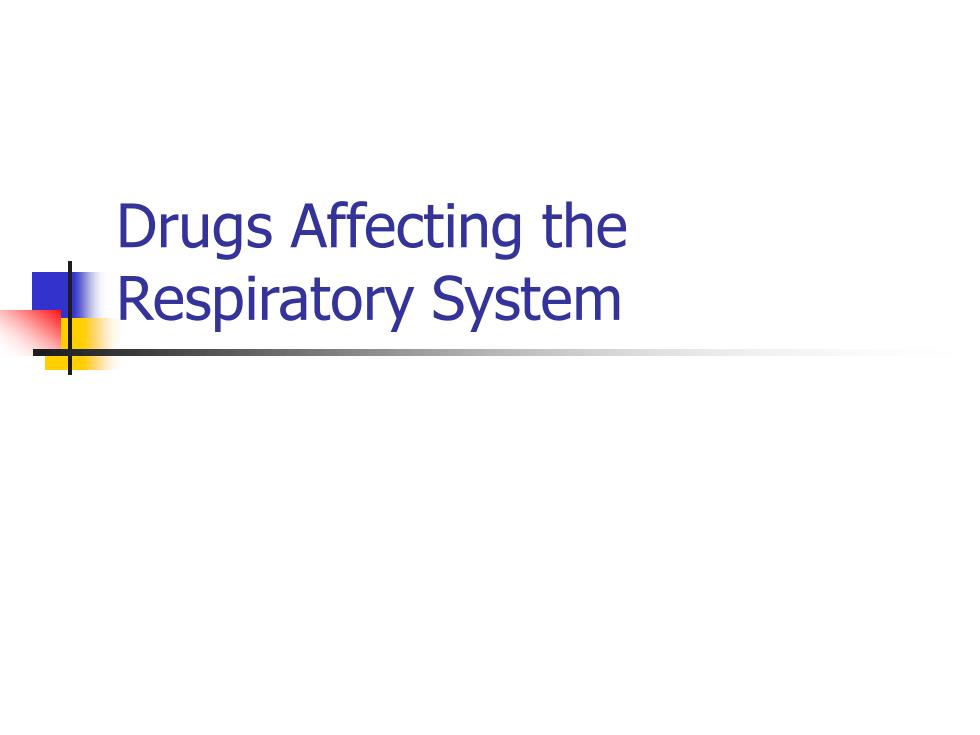
Drugs Affecting the Respiratory System
Drugs Affecting the Respiratory System
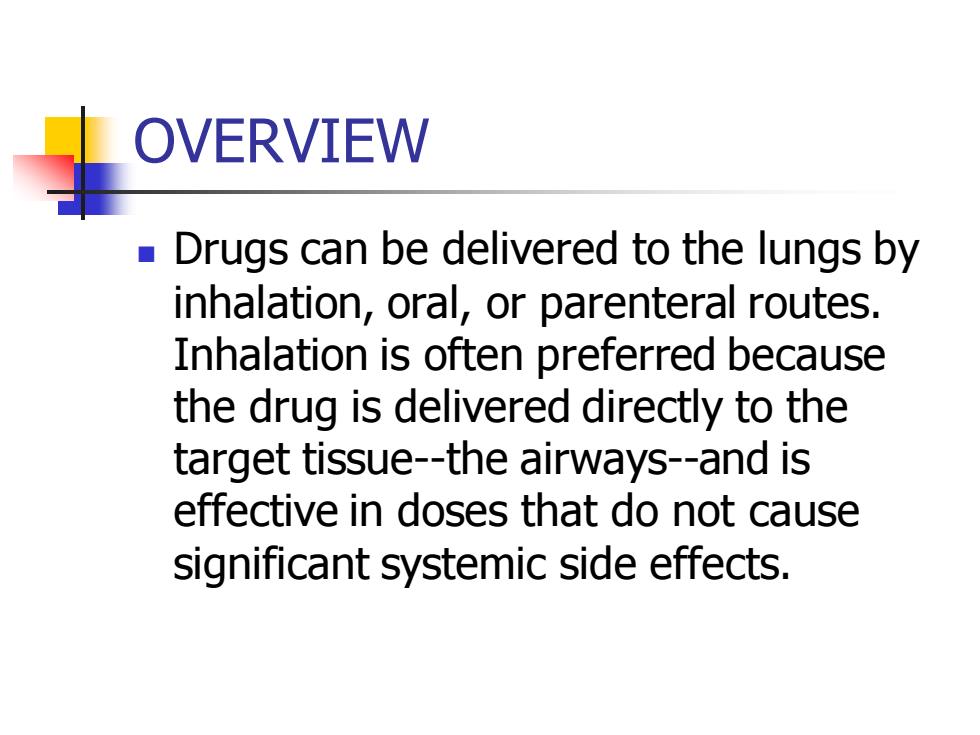
OVERVIEW Drugs can be delivered to the lungs by inhalation,oral,or parenteral routes. Inhalation is often preferred because the drug is delivered directly to the target tissue-the airways-and is effective in doses that do not cause significant systemic side effects
OVERVIEW ◼ Drugs can be delivered to the lungs by inhalation, oral, or parenteral routes. Inhalation is often preferred because the drug is delivered directly to the target tissue-the airways-and is effective in doses that do not cause significant systemic side effects
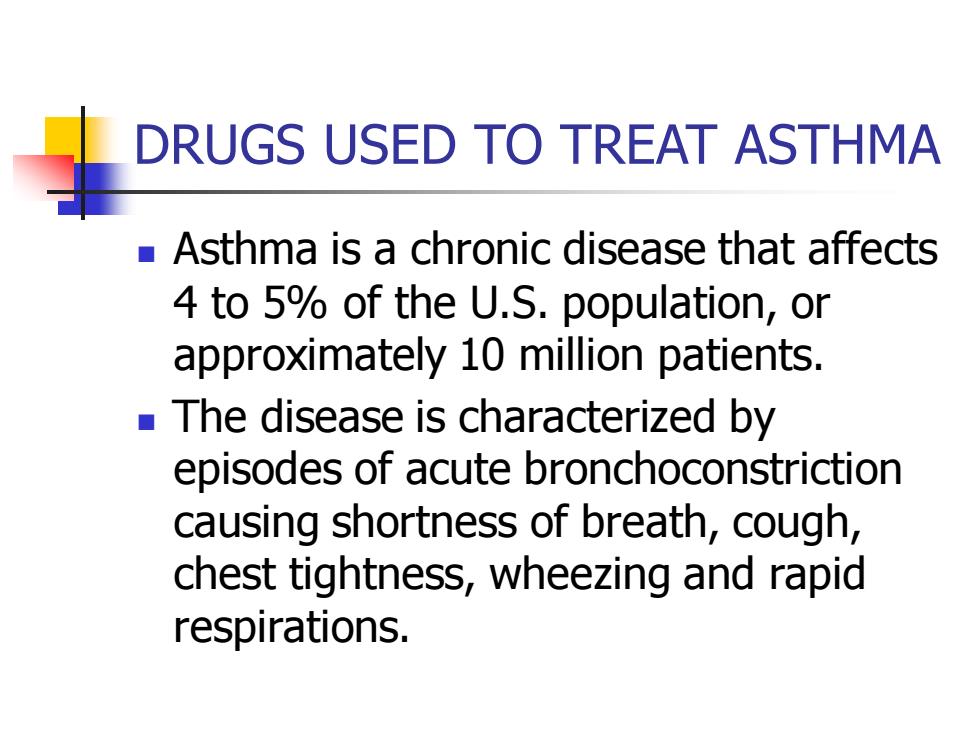
DRUGS USED TO TREAT ASTHMA Asthma is a chronic disease that affects 4 to 5%of the U.S.population,or approximately 10 million patients. The disease is characterized by episodes of acute bronchoconstriction causing shortness of breath,cough, chest tightness,wheezing and rapid respirations
DRUGS USED TO TREAT ASTHMA ◼ Asthma is a chronic disease that affects 4 to 5% of the U.S. population, or approximately 10 million patients. ◼ The disease is characterized by episodes of acute bronchoconstriction causing shortness of breath, cough, chest tightness, wheezing and rapid respirations
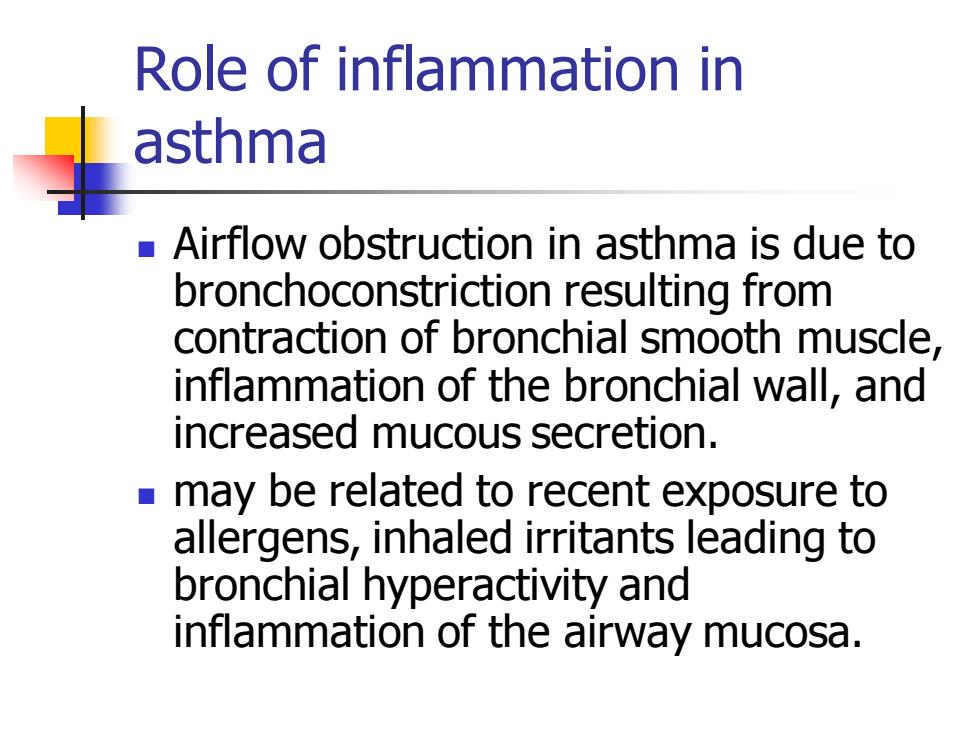
Role of inflammation in asthma Airflow obstruction in asthma is due to bronchoconstriction resulting from contraction of bronchial smooth muscle, inflammation of the bronchial wall,and increased mucous secretion. may be related to recent exposure to allergens,inhaled irritants leading to bronchial hyperactivity and inflammation of the airway mucosa
Role of inflammation in asthma ◼ Airflow obstruction in asthma is due to bronchoconstriction resulting from contraction of bronchial smooth muscle, inflammation of the bronchial wall, and increased mucous secretion. ◼ may be related to recent exposure to allergens, inhaled irritants leading to bronchial hyperactivity and inflammation of the airway mucosa
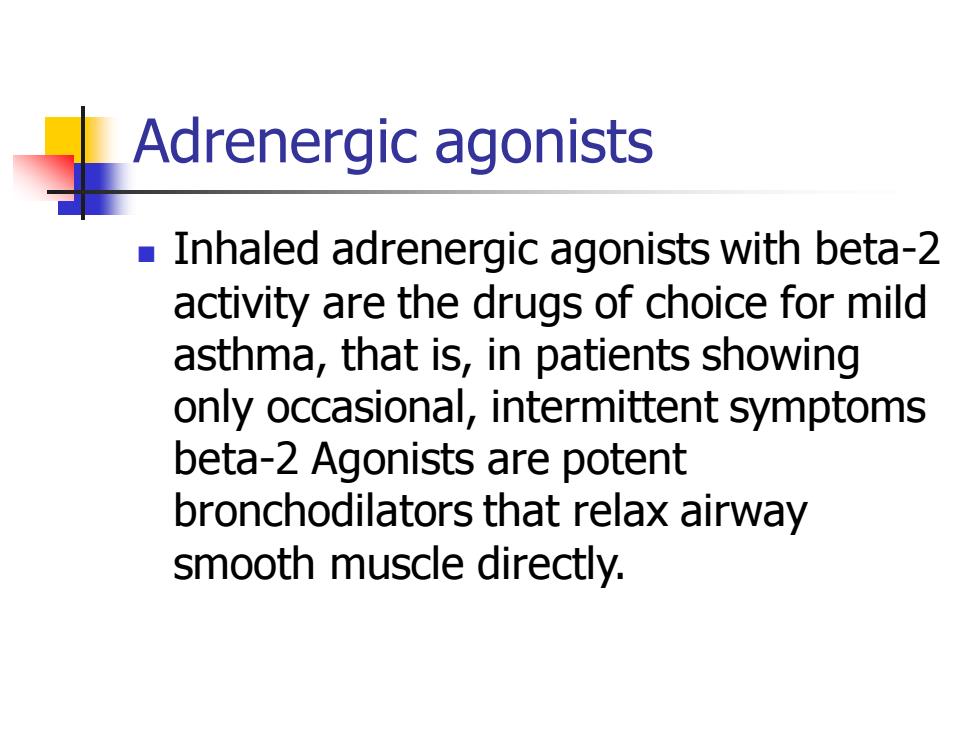
Adrenergic agonists Inhaled adrenergic agonists with beta-2 activity are the drugs of choice for mild asthma,that is,in patients showing only occasional,intermittent symptoms beta-2 Agonists are potent bronchodilators that relax airway smooth muscle directly
Adrenergic agonists ◼ Inhaled adrenergic agonists with beta-2 activity are the drugs of choice for mild asthma, that is, in patients showing only occasional, intermittent symptoms beta-2 Agonists are potent bronchodilators that relax airway smooth muscle directly
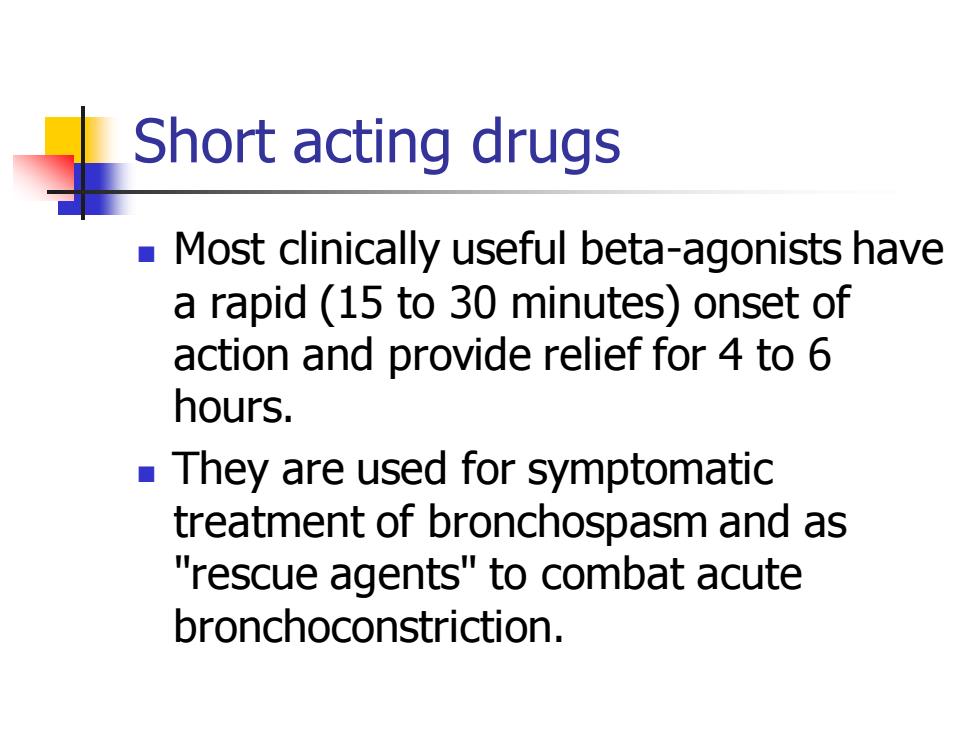
Short acting drugs Most clinically useful beta-agonists have a rapid (15 to 30 minutes)onset of action and provide relief for 4 to 6 hours. They are used for symptomatic treatment of bronchospasm and as "rescue agents"to combat acute bronchoconstriction
Short acting drugs ◼ Most clinically useful beta-agonists have a rapid (15 to 30 minutes) onset of action and provide relief for 4 to 6 hours. ◼ They are used for symptomatic treatment of bronchospasm and as "rescue agents" to combat acute bronchoconstriction
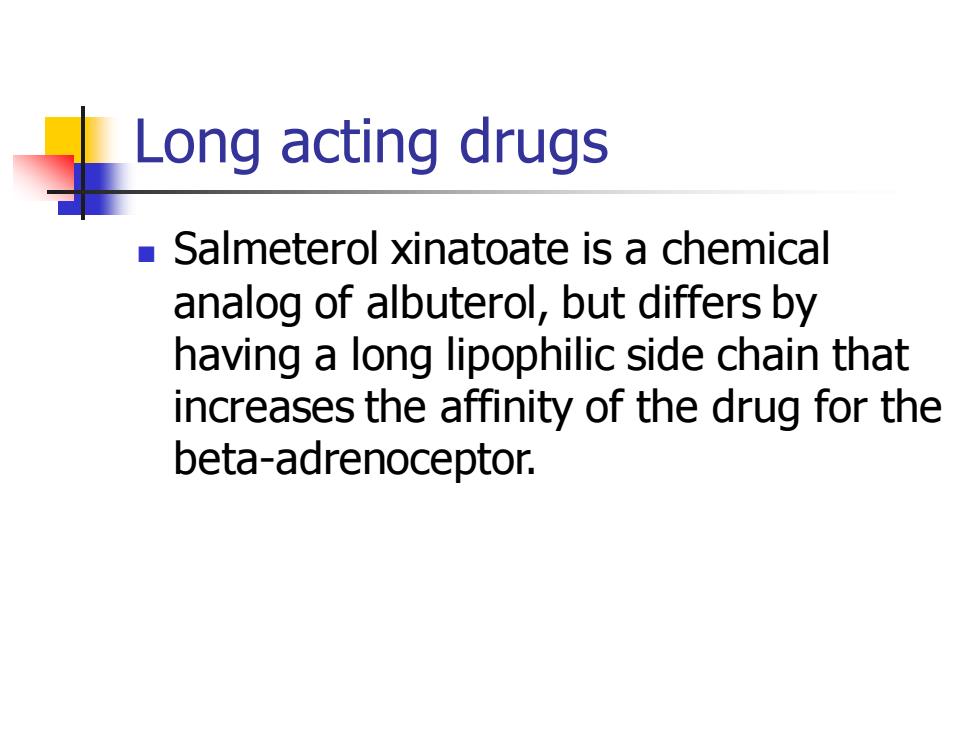
Long acting drugs Salmeterol xinatoate is a chemical analog of albuterol,but differs by having a long lipophilic side chain that increases the affinity of the drug for the beta-adrenoceptor
Long acting drugs ◼ Salmeterol xinatoate is a chemical analog of albuterol, but differs by having a long lipophilic side chain that increases the affinity of the drug for the beta-adrenoceptor

Corticosteroids Inhaled glucocorticoids are the drugs of first choice in patients with moderate to severe asthma who require inhalation of beta-adrenergic agonists more than once daily
Corticosteroids ◼ Inhaled glucocorticoids are the drugs of first choice in patients with moderate to severe asthma who require inhalation of beta-adrenergic agonists more than once daily
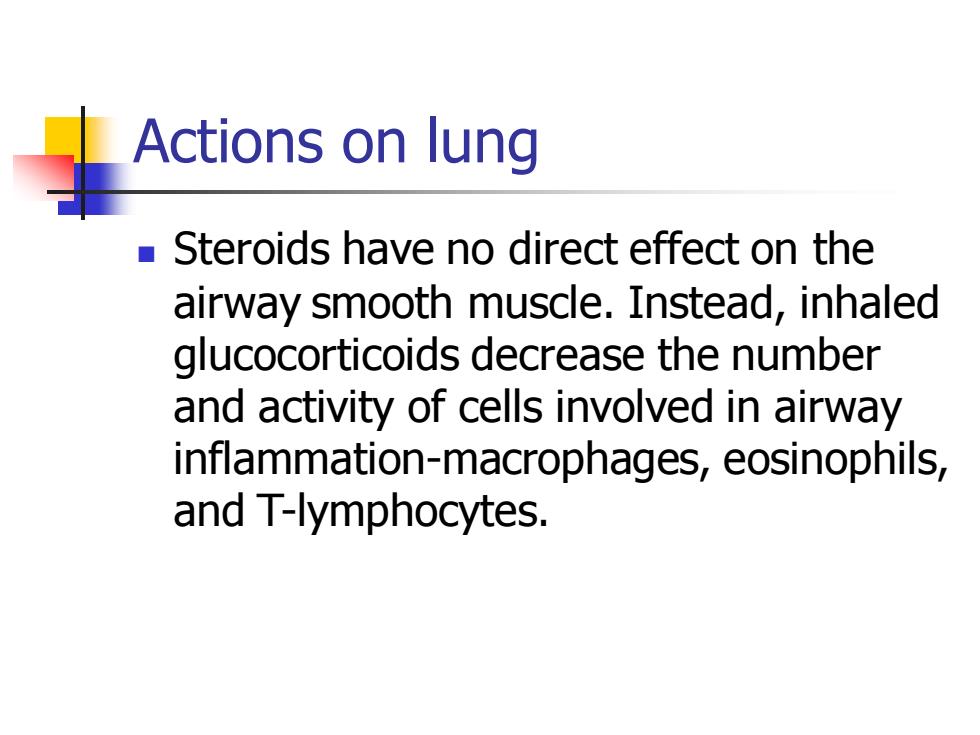
Actions on lung Steroids have no direct effect on the airway smooth muscle.Instead,inhaled glucocorticoids decrease the number and activity of cells involved in airway inflammation-macrophages,eosinophils, and T-lymphocytes
Actions on lung ◼ Steroids have no direct effect on the airway smooth muscle. Instead, inhaled glucocorticoids decrease the number and activity of cells involved in airway inflammation-macrophages, eosinophils, and T-lymphocytes
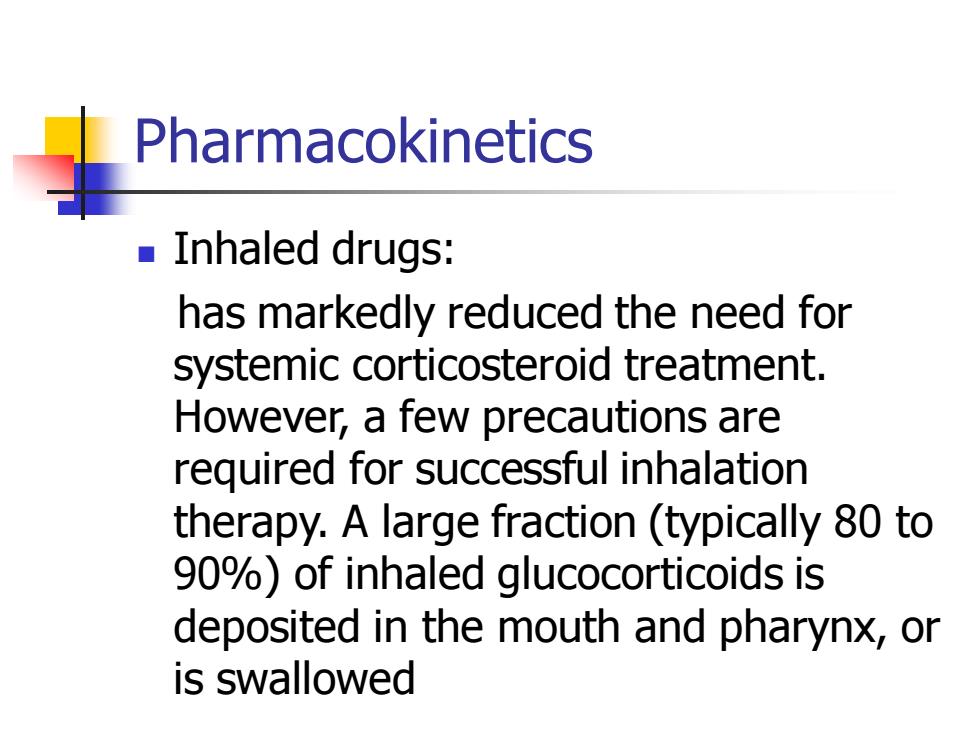
Pharmacokinetics Inhaled drugs: has markedly reduced the need for systemic corticosteroid treatment. However,a few precautions are required for successful inhalation therapy.A large fraction(typically 80 to 90%)of inhaled glucocorticoids is deposited in the mouth and pharynx,or is swallowed
Pharmacokinetics ◼ Inhaled drugs: has markedly reduced the need for systemic corticosteroid treatment. However, a few precautions are required for successful inhalation therapy. A large fraction (typically 80 to 90%) of inhaled glucocorticoids is deposited in the mouth and pharynx, or is swallowed